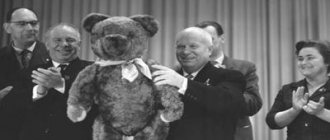Proper nutrition
Proper nutrition - the presence of all the necessary nutrients in the menu. Proper nutrition is a balanced diet with all the necessary substances, carbohydrates and fiber, the required amount of vitamins, minerals and microelements. Proper nutrition means limiting the intake of harmful substances.
You need to start limiting yourself from more harmful to less harmful.
Basic principles of proper nutrition:
- The energy value of food must correspond to the energy expenditure of the body.
- Balanced diet, i.e. compliance of the chemical composition of nutrients with the physiological needs of the body.
- Mode.
Correct diet:
- Eating at the same time every day.
- 4-5 meals a day.
- Intervals in eating should be at least 3 and no more than 5 hours.
- The interval between dinner and the start of sleep should be 3-4 hours.
Physical activity
Motor activity is understood as the sum of all movements made by a person in the process of his life. This is an effective means of maintaining and strengthening health, harmonious personal development, and disease prevention. An indispensable component of physical activity is regular physical education and sports.
Physical activity has a beneficial effect on the formation and development of all functions of the central nervous system: strength, mobility and balance of nervous processes. Systematic training makes muscles stronger and the body as a whole more adapted to environmental conditions.
Under the influence of muscle loads, the heart rate increases, the heart muscle contracts more strongly, and blood pressure rises. This leads to functional improvement of the circulatory system.
During muscle work, the breathing rate increases, inhalation deepens, exhalation intensifies, and the ventilation capacity of the lungs improves. Intensive full expansion of the lungs eliminates congestion in them and serves as a prevention of possible diseases.
Physical activity is a leading factor in human health, because is aimed at stimulating the body's defenses and increasing health potential. Full physical activity is an integral part of a healthy lifestyle, influencing almost all aspects of human life.
Project “Healthy Lifestyle”
Slide 1
MBOU “Basic secondary school No. 20, Suvorovskaya village Project on the topic: “Healthy lifestyle in our class” Completed by a student of grade 9 B Dyachenko Daria
Slide 2
The purpose of the project: to draw attention to the problem of health of people in different countries at the present time; conduct a study among classmates “Is your lifestyle healthy?” To do this, you need to solve the following tasks: create a mini-test “Do you lead a healthy lifestyle?”; conduct a survey “Types of sports in your family?; provide classmates with information about the dangers of alcohol, drugs, and smoking; bring test results to students; draw a conclusion about who can be called a healthy person. Hypothesis: If students know the factors influencing health, they will use them to maintain and strengthen it.
Slide 3
Healthy lifestyle The German philosopher Arthur Schopenhauer once said: “Nine-tenths of our happiness depends on how healthy a lifestyle we lead.” But each of us wants to be happy.
Slide 4
What is a healthy lifestyle? A healthy lifestyle is what allows us, living in an unfavorable environment and stressful situations, to feel good. This is what allows us to maintain good health and activity into old age.
Slide 5
Healthy lifestyle and proper nutrition. The food we eat ensures the development of tissues and cells of the body, their constant renewal, and is also a source of energy. The metabolism in our body depends entirely on the nature of our diet. Our ability to work, morbidity, physical development and growth, neuropsychological state, and life expectancy depend on what we eat. Therefore, proper nutrition and a healthy lifestyle are inseparable.
Slide 6
Research by scientists Research by scientists has shown that if every person adhered to 10 basic rules of a healthy lifestyle, we would live at least 100 years.
Slide 7
10 tips 10 tips developed by an international group of psychologists, doctors and nutritionists.
Slide 8
Tips 1 and 2 Tip 1: by solving crosswords, studying foreign languages, doing mental calculations, we train our brain. Tip 2: Find a job that suits you and that you will enjoy.
Slide 9
Tips 3 and 4 Tip 3: Don't eat too much. You should also not go to extremes and eat too little. Tip 4: the menu should be age appropriate.
Slide 10
Tip 5 and 6 Tip 5: Have your own opinion on everything. Tip 6: love and tenderness will help you stay young longer, so find yourself a partner. Strengthening the immune system is facilitated by the hormone of happiness (endorphin), which is produced in the body when a person is in love.
Slide 11
Tips 7 and 8 Tip 7: sleep better in a cool room (at a temperature of 17-18 degrees) Tip 8: move more often.
Slide 12
Tips 9 and 10 Tip 10: Don’t always suppress your anger. Tip 9: Pamper yourself periodically. Despite the recommendations regarding a healthy lifestyle, sometimes allow yourself something tasty.
Slide 13
What do Russians understand by the term “healthy lifestyle”? Sociological surveys show that taking care of health for every fifth Russian means visiting a doctor in a timely manner. They are ready to check the “health” box just by visiting a doctor and purchasing the pills he wrote on a piece of paper.
Slide 14
Results of the “Healthy Lifestyle” test Only 27% of my classmates lead a healthy lifestyle. Violate their daily routine – 18% Do not exercise – 9% Eat a lot of sweets – 46%
Slide 15
The truth about Russians True, 15% of Russians have included physical activity in their health care, by which they mean regular morning exercises, running and walking in winter.
Slide 16
The main question Another survey showed that only a third of Russian citizens feel personal responsibility for their health. The rest are looking for extremes: doctors, the state, evil forces... But one thing is obvious: the state of our health is only in our hands. Maybe it's time to lead a healthy lifestyle not just for show?
Slide 17
What is meant by the term healthy lifestyle in Sweden? For Swedes, taking care of your health is primarily about physical activity.
Slide 18
Bicycle Well, the people of Sweden never forget about their two-wheeled friend.
Slide 19
What do Americans understand by the term “healthy lifestyle”? The world leadership in obesity is more revealing than any sociological survey. True, Americans talk to each other about a healthy lifestyle no less often than the British talk about the weather. Their desire to be healthy is also demonstrated by the promotion of smoking, which begins in kindergarten.
Slide 20
What do the Chinese understand by the term “healthy lifestyle”? One of the reports from the Chinese Ministry of Health contained disappointing figures: only 25% of the urban and 10% of the rural population of this country can pay for medical services. But ancient traditions do not allow the Chinese to die out: they move a lot, eat few harmful foods, know how to quickly relax and practice massage and acupuncture almost every day.
Slide 21
What do the Japanese understand by the term “healthy lifestyle”? Japanese sociologists, having collected information about the lifestyle and habits of the centenarians of this country, developed their principles of a healthy lifestyle: sleep more, eat less, know how to relax, constantly force your brain to work, know how to laugh, do not dress too warmly, do not drink or smoke.
Slide 22
Bad habits Bad habits prevent a person from successfully realizing himself as an individual, as a representative of a given society, throughout his life. Bad habits can be divided into 3 categories depending on what object they are mainly directed at: at their carrier, at other people, at surrounding objects.
Slide 23
Harm to others There are many bad habits that do not harm the one who possesses them, but interfere with others. These are habits of speaking loudly in public places, using foul language, being rude, etc.
Slide 24
Harm to health Among bad habits, the most dangerous are systematic alcohol consumption, smoking, excess nutrition, physical inactivity, and medication abuse.
Slide 25
Sports Movement is life, and active movement is a healthy life. Daily exercise is the key to beauty and health. It is important that sport, in addition to benefits, brings pleasure, and for this you need to choose the sport that suits you.
Slide 26
The result of the survey “Sports in my family” Cycling – 50% Swimming – 18% Morning exercises – 43% Roller skating – 12% Football – 31% Badminton – 37% Tennis – 18% Running – 56%
Slide 27
Quest “We are for a healthy lifestyle” Station “Sportland” Station “Mind Games” Station “First Aid” Station “Proper Nutrition”
Slide 28
Conclusion: A healthy lifestyle is led by a person who eats right; moves a lot; maintains personal hygiene; combines work and rest; has no bad habits; hardened; maintains a daily routine; always remains optimistic. Living healthy is great
Personal hygiene
Personal hygiene is a set of hygienic rules, the implementation of which helps to preserve and strengthen human health.
Personal hygiene includes general hygienic rules that are the same for people of any age: proper alternation of mental and physical labor, physical education, regular meals of nutritious food, alternation of work and active rest, adequate sleep. Personal hygiene in the narrow sense includes hygienic requirements for keeping the body, linen, clothing, home clean, as well as maintaining cleanliness when preparing food. The first priority is to maintain cleanliness of the body.
Bad habits
What is a bad habit? A bad habit is an action that is automatically repeated many times, and this action is harmful from the point of view of the public good, others or the health of the person himself who has fallen under the bondage of the bad habit.
Bad habits include the following:
- Alcoholism
- Addiction
- Smoking
- Computer games
Alcoholism is the most common bad habit, often turning into a serious disease, characterized by a painful addiction to alcohol (ethyl alcohol), with mental and physical dependence on it, accompanied by systematic consumption of alcoholic beverages despite the negative consequences.
Drug addiction is a chronic progressive (development of the disease with increasing symptoms) disease caused by the use of drug substances. Different drugs cause different addictions. Some drugs are highly addictive psychologically but not physically addictive. Others, on the contrary, cause strong physical dependence. Many drugs cause both physical and psychological dependence.
Smoking is the inhalation of smoke from drugs, mainly of plant origin, smoldering in the flow of inhaled air, in order to saturate the body with the active substances they contain through their sublimation and subsequent absorption in the lungs and respiratory tract.
Conclusion
The topic of developing a healthy lifestyle among the younger generation is very relevant, and especially in our time, since the number of students with health problems increases every year, many students have unhealthy habits, which has a very detrimental effect on both spiritual and physical state of health. A healthy lifestyle is a generally accepted, reliable, effective way to preserve and strengthen people’s health.
During the work, our hypothesis was completely justified. Teenagers can explain what the concept of a healthy lifestyle includes, but there is practically no child who fully complies with the rules of a healthy lifestyle.
Everyone knows what a healthy lifestyle is and its components, but there are very few children who follow it.
To promote a healthy lifestyle, together with classmates, booklets and a video on promoting a healthy lifestyle were developed.
Bibliography
- Artemyeva, T. Regardless of dependence / T. Artemyeva // Be healthy. – 2010. – No. 2. – P. 64-71. About alcohol and drug addiction, treatment.
- Artemyeva, T. Amosova system / T. Artemyeva // Be healthy. – 2010. – No. 1. – P. 32-39. About the health system.
- Vasilyeva, D. There is no place for bad habits / D. Vasilyeva // Before it’s too late. – 2010. – No. 11. – P. 3.
- Vech, G. “Protect with your heart” / G. Vech // NarcoNet. – 2010. – No. 6. – P. 48-49. Prevention of drug addiction.
- General cleaning of the body // Be healthy. – 2010. – No. 2. – P. 20-24. Cleansing the body
If you liked the page, share it on social networks:
Project “School for a healthy lifestyle”
The main idea of the project.
Project “ School for a healthy lifestyle! " is intended for students of the municipal educational institution Velikovrazhskaya Secondary School and is aimed at developing in them a positive experience of leading a healthy lifestyle. The project is organized within the framework of the “ Health ” program, the “Future for Us” program for the prevention of neglect and juvenile delinquency, which were developed at our school, within the framework of the regional target program “Comprehensive measures to combat drug abuse and illicit trafficking for 2011 - 2014.”
The project team includes members of the school volunteer public organization “CHANCE”. Project events are carried out on a “peer-to-peer” principle, that is, they are carried out by employees, children who have experience and achievements in an active healthy lifestyle, creativity, study and sports. All events are positive and optimistic.
This project involves the creation of methodological and didactic materials for the implementation of the “Health” program, aimed at preventing bad habits, promoting a healthy lifestyle and teaching the ability to resist various risk factors.
This project is in demand in real teaching practice, since teachers use the presented methodological and didactic materials in their work, so the relevance of the work is obvious.
Problem.
Today, no one doubts the position that the success of schooling is determined by the level of health with which the child entered first grade. A sedentary lifestyle, sitting for many hours in front of the TV and computer, educational overload, lack of a healthy lifestyle in many families, unhealthy diet, unfavorable environmental situation, and a number of other factors are the main reasons for the sharp deterioration in children's health.
In this regard, the main priorities of a modern school include optimization of the educational process in order to preserve the physical, mental, spiritual and moral health of students.
We became interested in this problem and decided to conduct our own sociological research. In one of the sociological surveys conducted at a school-wide parent meeting, the question: “What, in your opinion, is most important for a child’s happy life?” 86% of parents o. More than half of the parents surveyed believe that a happy life requires, first of all, health, family, a good education, material well-being and an interesting job. Moreover, “ health ” is the absolute leader here.
A similar study among adolescents revealed that modern schoolchildren have different, sometimes mutually exclusive, life goals. At the same time, for the majority of respondents, the most important life values are: family, friendship, education, health.
What is the real picture of the health of children in our school?
The health status of students was assessed based on the results of studying in-school medical documentation in various areas.
Analysis of the data shown in the diagrams shows that the number of children with health problems has decreased. But the number of sick children among students has increased (due to overload, physical, environmental changes).
Our future depends on today's graduates, on their physical and moral health. But over the years of school, the health of many children deteriorates. Negative trends have emerged for a number of indicators: the number of children with chronic diseases is increasing. Children's alcoholism and drug addiction, as well as schoolchildren's smoking, are of concern. Involving students in the implementation of the project will help to correctly solve the problem of free time, form a negative attitude towards bad habits and realize responsibility for their own health.
Over the past year, colds and children's visits to medical institutions have been decreasing. This was achieved as a result of the joint efforts of the school’s teaching staff, parents and children to preserve and improve health.
Although preventive work at school is carried out throughout the system, by the end of education there is still an increase in the number of children with low vision, poor posture, scoliosis, flat feet, and chronic gastrointestinal diseases.
the health of children using effective, easy-to-use techniques and methods that ensure the fullest possible coverage of students and at the same time do not disrupt the educational process at school .
It should be noted that only systematic implementation of health-improving work with a child at school and at home will give the desired result, will help to acquire not only solid knowledge, but also conscious skills, and will ensure the formation of positive attitudes towards protecting one’s health.
Thus, the problem of preserving and strengthening the health of children, forming a conscious desire for a healthy lifestyle for our school really remains relevant and can be solved, in our opinion, through the implementation of the project.
Project implementation schedule.
Objective of the project.
Formation and development of a healthy lifestyle culture among the younger generation, strengthening moral guidelines and preserving the health of schoolchildren through the organization of a set of creative, sports and educational events designed to show how healthy, prestigious and interesting it is to lead a healthy lifestyle .
Project objectives.
Promotion of healthy lifestyles;
Increasing physical activity of students;
Formation of a conscious attitude of schoolchildren towards their health ;
Nurturing an active life position;
Organization of useful leisure time;
Prevention of antisocial behavior;
Development of the volunteer movement;
Formation and development of social-communicative, creative and organizational skills;
Formation of the need for teamwork.
All material is in the document.








